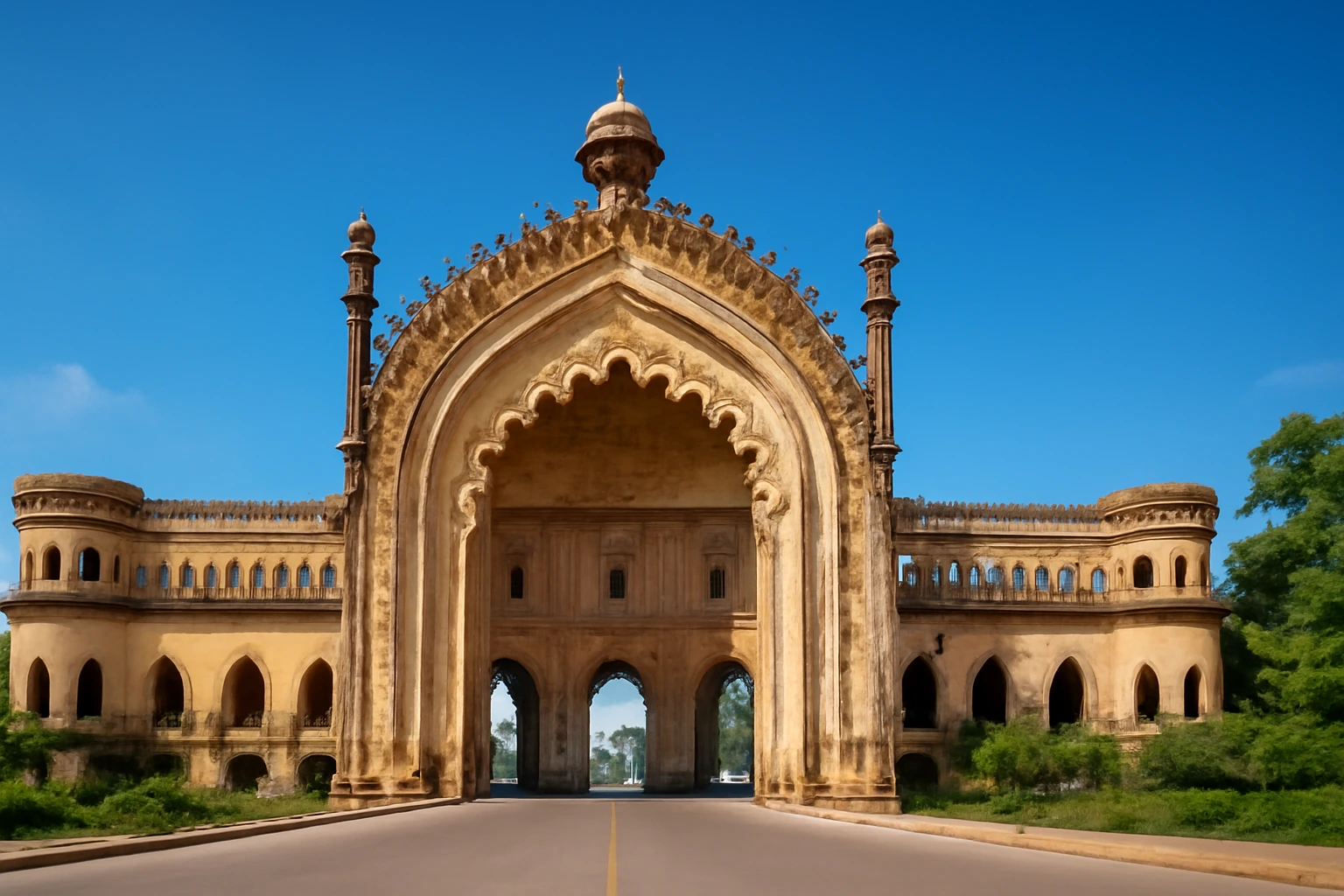Among the historical treasures of Lucknow, the Rumi Darwaja stands tall as an emblem of the city’s cultural grandeur and architectural ingenuity. Constructed in 1784 under the patronage of Nawab Asaf-ud-Daula, this majestic gateway marks one of the most recognizable landmarks of the Awadh region. More than just an entryway, Rumi Darwaja bridges the past and present, narrating stories of resilience, artistry, and the city’s progressive spirit.
Key Significance
- Built during a period of economic hardship and famine, the Rumi Darwaja was part of a “food-for-work” program to aid local residents.
- It originally marked the entrance to Old Lucknow and is located between Bara Imambara and Chhota Imambara, near other historic landmarks such as the Asafi Imambara.
- The word “Rumi” comes from “Rûm,” referring to Anatolia or the Eastern Roman (Byzantine) Empire, showing the gateway’s Turkish influence.
Rumi Darwaja: Architectural Brilliance
Rumi Darwaja, often called the “Turkish Gate,” draws inspiration from the grand portals of ancient Constantinople, particularly the Sublime Porte (Bab-i-Humayun) in Istanbul. Distinct from the red sandstone favored by many Mughal structures, this gateway was constructed using lime-coated bricks—a technique that allowed for more delicate, intricate carvings and floral motifs along its impressive facade. Standing at 60 feet high, it features a wide central arch flanked by slender turrets, ornate niches, and delicate lattice work. The gateway’s crown is an eight-sided chhatri (octagonal canopy), once illuminated by a lantern at night, adding to its grandeur.
Historical and Social Context
The creation of the Rumi Darwaja coincided with a period of hardship; a severe famine struck Awadh during Nawab Asaf-ud-Daula’s rule. To support his people, the Nawab initiated a food-for-work program, commissioning public architecture like the Rumi Darwaja. This not only offered employment but also left Lucknow a legacy of fine buildings that showcased the blend of Mughal and Awadhi styles. The gateway thus stands as a symbol of humanitarian vision as well as architectural excellence.
Cultural Legacy
Once the gateway to Old Lucknow, the Rumi Darwaja today watches over the city’s bustling streets, reminding locals and visitors alike of its royal legacy. The detailed artistry, use of traditional construction materials, and overall design have made it a focus of heritage conservation efforts. After recent restoration, the Darwaja gleams with renewed splendor while traffic restrictions help preserve its delicate structure.
Visiting Rumi Darwaja
Open to all visitors without any entry fee, Rumi Darwaja remains a must-visit heritage destination throughout the year. Its beauty transforms remarkably from sunrise to sunset, but the evening illumination imparts an ethereal charm. Whether for casual tourism, architectural study, or history exploration, the gateway continues to inspire awe as a testament to Lucknow’s enduring spirit and historical depth.
MCQs on Rumi Darwaja
1. In which city is the Rumi Darwaja located?
a) Agra
b) Aligarh
c) Fatehpur Sikri
d) Lucknow
Answer: d) Lucknow
2. Who commissioned the construction of Rumi Darwaja?
a) Wajid Ali Shah
b) Asaf-ud-Daula
c) Shuja-ud-daula
d) Adbdul Mansur
Answer: b) Asaf-ud-Daula
3. Which historical complex is located near the Rumi Darwaja?
a) Red Fort
b) Bara Imambara
c) Qutub Minar
d) Buland Darwaza
Answer: b) Bara Imambara
4. In which year was the Rumi Darwaja built?
a) 1565
b) 1654
c) 1784
d) 1857
Answer: c) 1784
5. What architectural style does Rumi Darwaja represent?
a) Dravidian
b) Awadhi
c) Mughal
d) Indo-Saracenic
Answer: b) Awadhi
6. The Rumi Darwaja is also known as the:
a) Royal Gate
b) Turkish Gate
c) Persian Portal
d) Marble Arch
Answer: b) Turkish Gate
7. Which of the following is NOT true about Rumi Darwaja?
a) Located in Lucknow
b) Built by Nawab Asaf-ud-Daula
c) Made of red sandstone
d) An example of Awadhi architecture
Answer: c) Made of red sandstone
